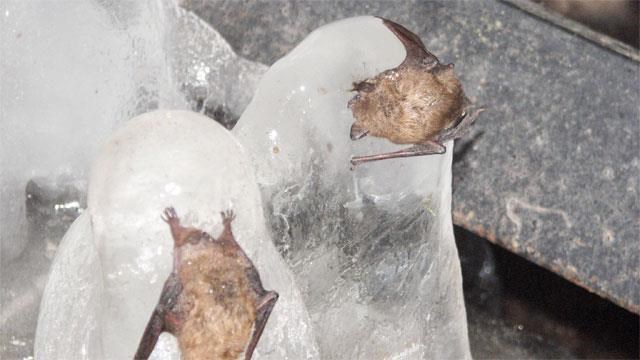
Kimberly Miller/USGS
Rapid, unpredictable, or unusual changes in seasonal weather patterns, like those associated with climate change, can make it difficult for bats to survive. Similar to effects on other wildlife and humans, heat waves and droughts can cause bats to die from overheating or from lack of food. Massive wildfires fueled by hot and dry conditions can also be harmful to bats by destroying habitat, although some level of fire can help keep forests healthy and provide better habitat for bats.
Even within secluded caves, bats aren’t always safe from the elements. Intense storms and heavy rainfall can flood roosts, killing entire colonies of bats trapped in caves or mines. Early season snow and prolonged freezing temperatures have also killed bats by blocking cave entrances with snow drifts and ice, or causing bats to freeze to death within their roosts during hibernation.
All of these events, heat waves, droughts, intense storms and flooding are occurring more often as the Earth’s climate changes and are expected to take a toll on bats around the world. Learn about Climate Change and Your National Parks.
Last updated: October 17, 2024
